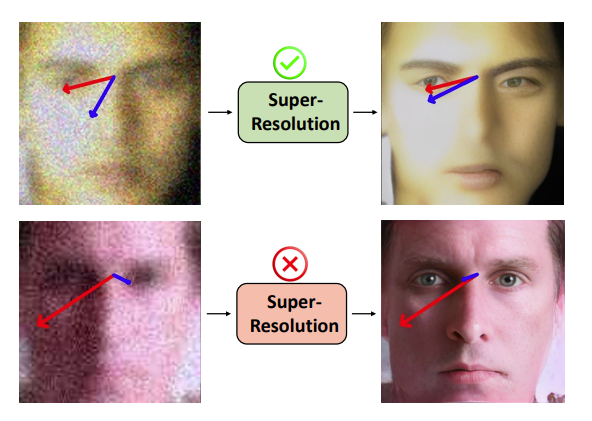Toward Super-Resolution for Appearance-Based Gaze Estimation
PubDate: Mar 2023
Teams: Carleton Unviersity
Writers: Galen O’Shea, Majid Komeili
PDF: Toward Super-Resolution for Appearance-Based Gaze Estimation

Abstract
Gaze tracking is a valuable tool with a broad range of applications in various fields, including medicine, psychology, virtual reality, marketing, and safety. Therefore, it is essential to have gaze tracking software that is cost-efficient and high-performing. Accurately predicting gaze remains a difficult task, particularly in real-world situations where images are affected by motion blur, video compression, and noise. Super-resolution has been shown to improve image quality from a visual perspective. This work examines the usefulness of super-resolution for improving appearance-based gaze tracking. We show that not all SR models preserve the gaze direction. We propose a two-step framework based on SwinIR super-resolution model. The proposed method consistently outperforms the state-of-the-art, particularly in scenarios involving low-resolution or degraded images. Furthermore, we examine the use of super-resolution through the lens of self-supervised learning for gaze prediction. Self-supervised learning aims to learn from unlabelled data to reduce the amount of required labeled data for downstream tasks. We propose a novel architecture called SuperVision by fusing an SR backbone network to a ResNet18 (with some skip connections). The proposed SuperVision method uses 5x less labeled data and yet outperforms, by 15%, the state-of-the-art method of GazeTR which uses 100% of training data.



